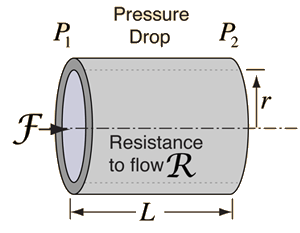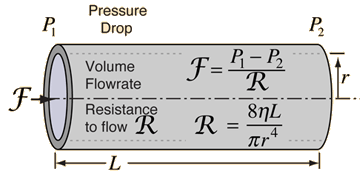Poiseuille's Law
 |
In the case of smooth flow (laminar flow), the volume flowrate is given by the pressure difference divided by the viscous resistance. This resistance depends linearly upon the viscosity and the length, but the fourth power dependence upon the radius is dramatically different. Poiseuille's law is found to be in reasonable agreement with experiment for uniform liquids (called Newtonian fluids) in cases where there is no appreciable turbulence. |

| Calculation | Example: changing flow parameters |
Poiseuille's law concepts
| HyperPhysics***** Mechanics ***** Fluids | R Nave |


